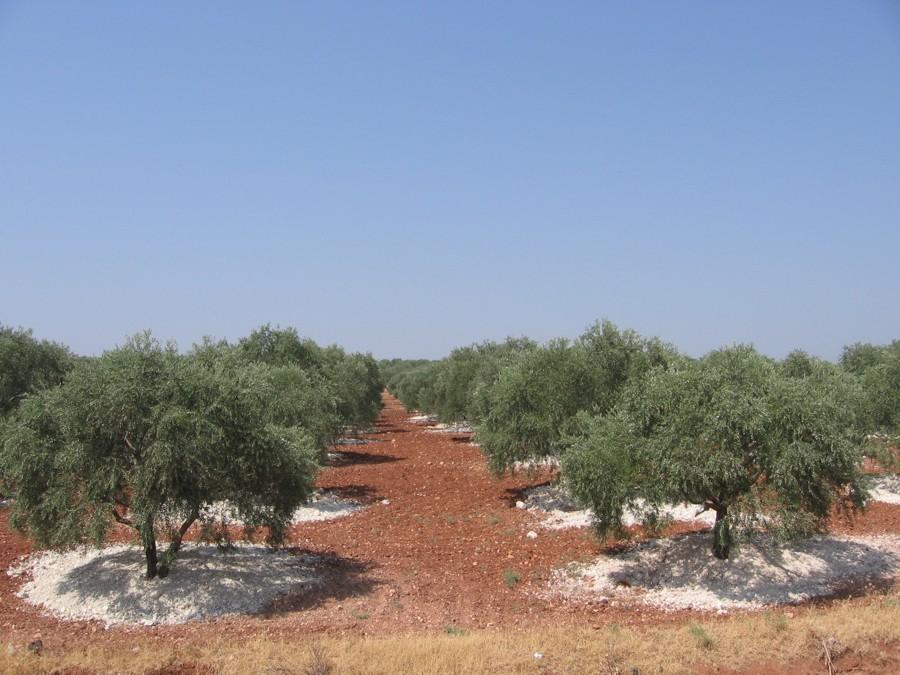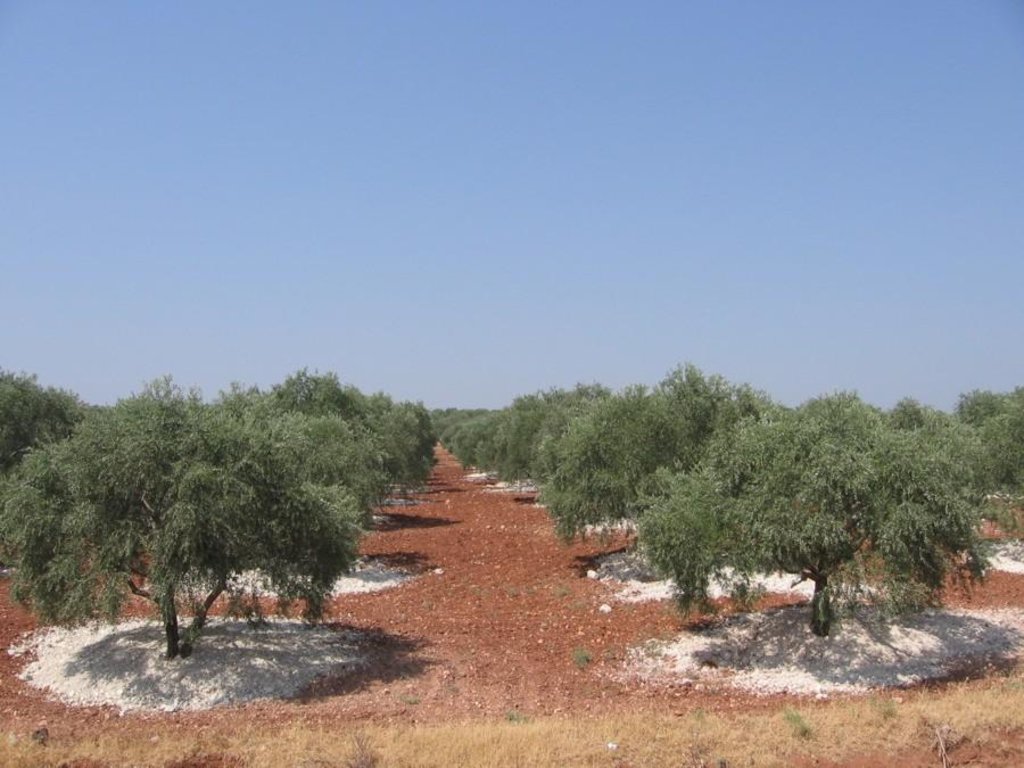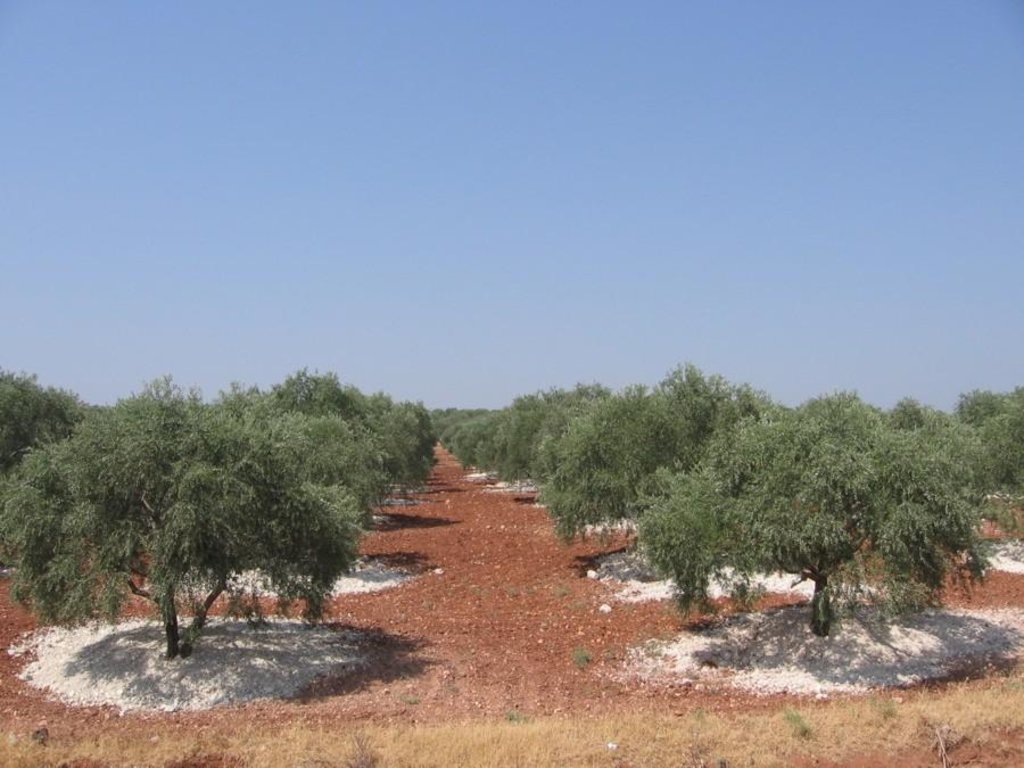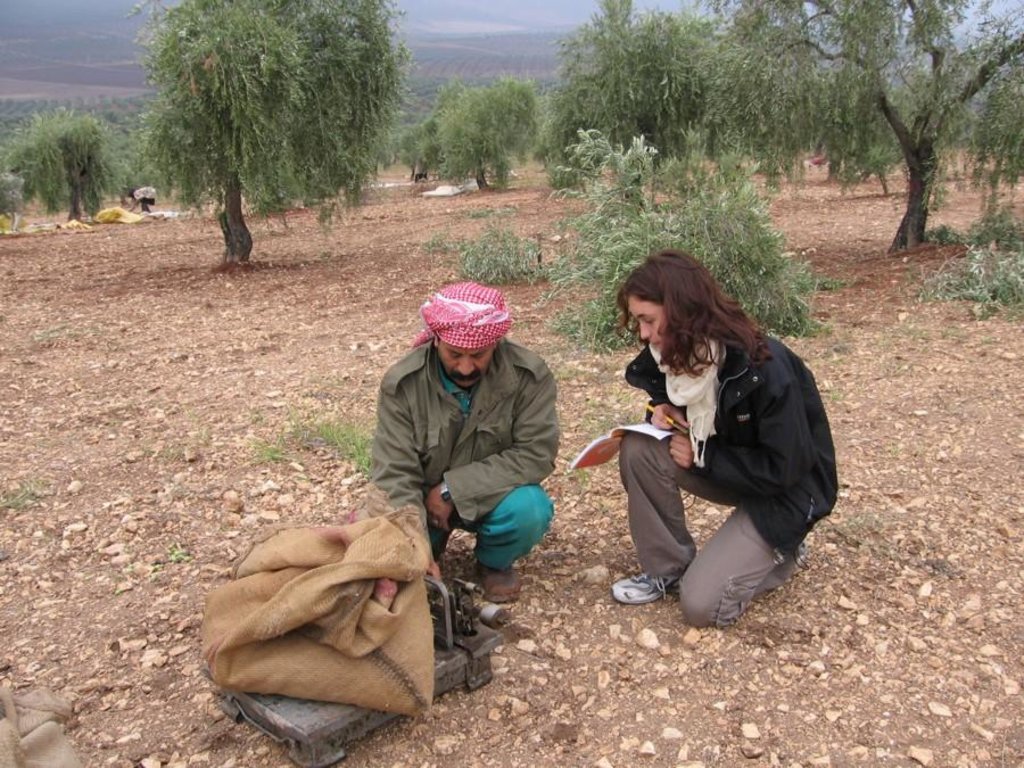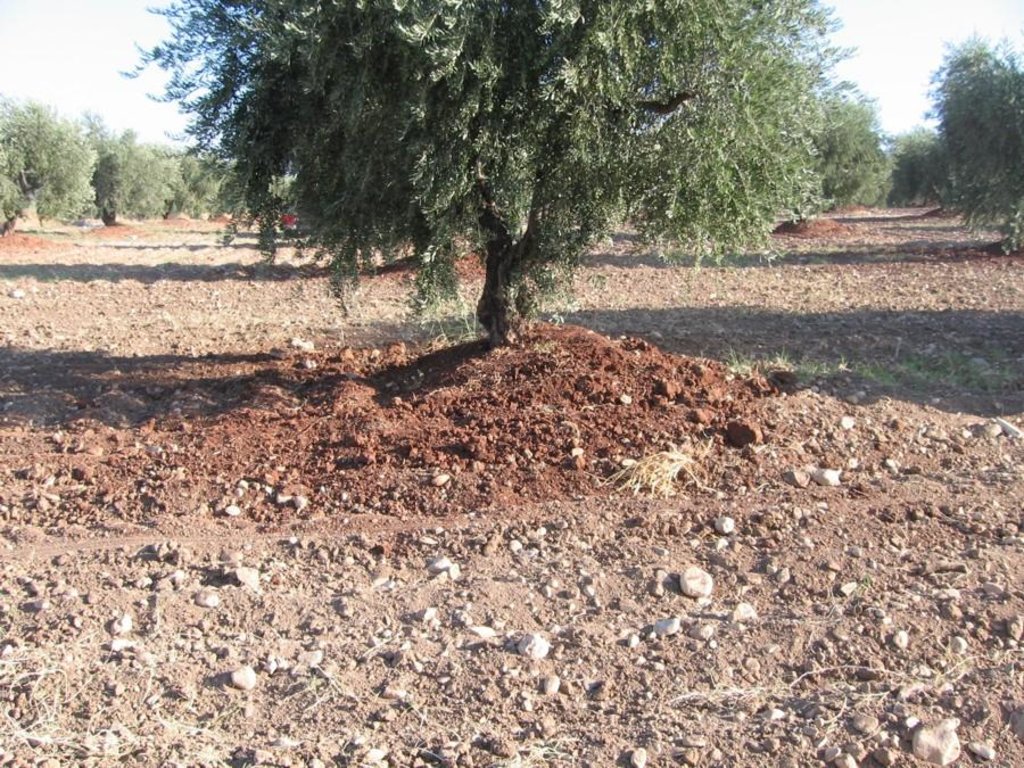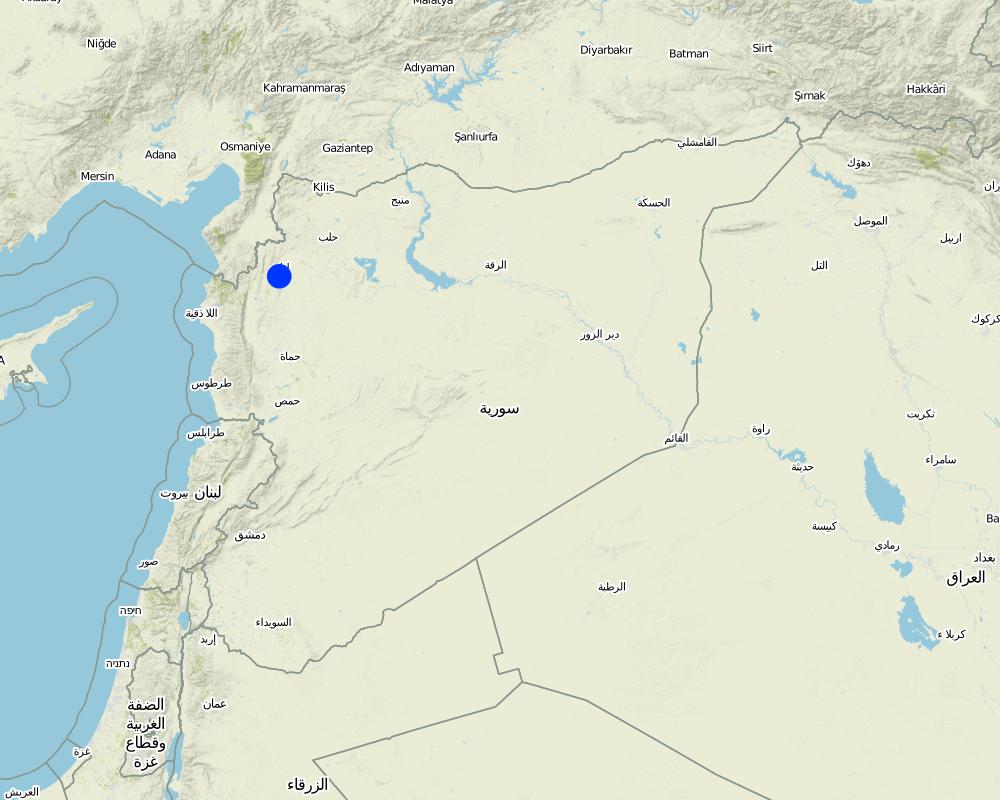Adding soil [阿拉伯叙利亚共和国]
- 创建:
- 更新:
- 编制者: Liesbeth Colen
- 编辑者: –
- 审查者: David Streiff
approaches_2624 - 阿拉伯叙利亚共和国
查看章节
全部展开 全部收起1. 一般信息
1.2 参与方法评估和文件编制的资源人员和机构的联系方式
SLM专业人员:
SLM专业人员:
有助于对方法进行记录/评估的机构名称(如相关)
Deutsche Gesellschaft für Internationale Zusammenarbeit (GIZ) - 德国1.3 关于使用通过WOCAT记录的数据的条件
编制者和关键资源人员接受有关使用通过WOCAT记录数据的条件。:
是
1.4 SLM技术问卷的参考
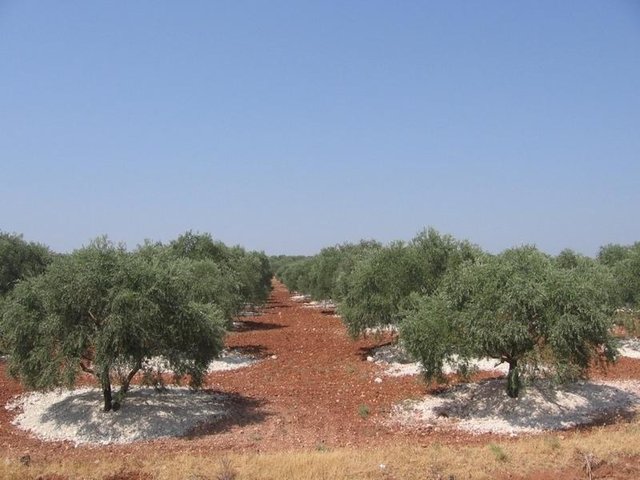
Adding Soil [阿拉伯叙利亚共和国]
To add red (fertile, nutrient rich) valley soil to degraded white soil on slopes (in olive orchards)
- 编制者: Liesbeth Colen
2. SLM方法的描述
2.2 该方法的详细说明
该方法的详细说明:
Aims / objectives: Observation of spontaneously spread analysis. Management invented by farmers themselves, in a later stage it should be adapted or combined with conservation strategies.
Methods: Semi-structured individual interviews and group discussions in the area where the measure is spontaneously adopted.
Stages of implementation: For now only the initial stage: Farmers applying the measure, but to make ita a developed, sustainable and conservation it should be combined with other conservation strategies to make it a complete, sustainable land management strategy,
Role of stakeholders: Technique developed by farmers themselves, they pass information among each other.
Other important information: Can not yet be considered as a real conservation strategy. Till now no interventions from scientists/institutions has been done. Only observation and analysis of this existing land management practice.
2.3 该方法的照片
2.5 采用该方法的国家/地区/地点
国家:
阿拉伯叙利亚共和国
区域/州/省:
Afrin and Idleb
Map
×2.8 该方法的主要目的/目标
The Approach focused on SLM only
replace top soil which was eroded during rainfalls, increase soil fertility, protect soil from further erosion
2.9 推动或妨碍实施本办法所适用的技术的条件
财务资源和服务的可用性/可得性
- 阻碍
costly, requires investment
Treatment through the SLM Approach: but applicable at small scale to spread costs over many years.
法律框架(土地使用权、土地和水使用权)
- 启动
The existing land ownership, land use rights / water rights helped a little the approach implementation: In areas without private land ownership farmers have less possibilities (if illegal cultivation on forest land) or incentives (if governmental agricultural land) to change the land by adding soil.
- 阻碍
Soil is taken away, which is not legal in all cases, lack of clear laws
Treatment through the SLM Approach: need for laws concerning this land management
了解SLM,获得技术支持
- 阻碍
physical environmewnt: can not be implemented on very steep land (tractor cannot reach)
Treatment through the SLM Approach:
3. 相关利益相关者的参与和角色
3.1 该方法涉及的利益相关者及其职责
- 当地土地使用者/当地社区
Working land users were mainly men
Only in some exceptional cases farmers' women are interviewed
Decisionmaking done by men, they pass information among each other
Each farmer decides on his own if he wants to try out this technology, economic status only determines the scope (to add soil on onlay a few trees = less expensive, or on all trees = rather done by wealthier farmers)
- SLM专家/农业顾问
Only in some exceptional cases farmers' women are interviewed.
3.2 当地土地使用者/当地社区参与该方法的不同阶段
| 当地土地使用者/当地社区的参与 | 指定参与人员并描述活动 | |
|---|---|---|
| 启动/动机 | 自我动员 | |
| 计划 | 自我动员 | The practice spread spontaneously to neighbouring villages and district |
| 实施 | 自我动员 | responsibility for major steps, casual labour; Farmers adopt the practice spontaneously. Some extension officers start advicing the practice |
| 监测/评估 | 被动 | Olive bureau Idleb experimented the addition of white soil on red fields. Recently samples are taken from farmers' fields to analyze the benefits. In the evaluation itself the farmers are not involved, they only agree that soil samples are taken and production is measured. |
| Research | 被动 | Research od social and economic aspects, farmers are passively involved by interviewing and group discussions. |
3.4 有关SLM技术选择的决策
具体说明谁有权决定选择要实施的技术:
- 仅限土地使用者(自主)
解释:
Decisions on the method of implementing the SLM Technology were made by by land users* alone (self-initiative / bottom-up)
4. 技术支持、能力建设和知识管理
4.1 能力建设/培训
是否为土地使用者/其他利益相关者提供培训?:
否
4.2 咨询服务
土地使用者有权使用咨询服务吗?:
是
说明/注释:
Advisory service is inadequate to ensure the continuation of land conservation activities; Extension officers will be informed about the lack of sustainability and the need of combination with land management strategies, information/training about the implementation of this conservation strategies however is still lacking
4.3 机构强化(组织发展)
是否通过这种方法建立或加强了机构?:
- 否
4.4 监测和评估
监测和评估是该方法的一部分吗?:
是
注释:
bio-physical aspects were ad hoc monitored by 0 through measurements; indicators: None
socio-cultural aspects were ad hoc monitored by 0 through observations; indicators: None
economic / production aspects were ad hoc monitored by 0 through observations; indicators: None
area treated aspects were ad hoc monitored by 0 through observations; indicators: None
no. of land users involved aspects were ad hoc monitored by 0 through observations; indicators: None
There were no changes in the Approach as a result of monitoring and evaluation: None
4.5 研究
研究是该方法的一部分吗?
是
明确话题:
- 社会学
- 经济/市场营销
提供进一步的细节,并指出是谁做的研究:
market of soil analysis, social analysis of adopters/innovators/non-adopters
Research was carried out both on station and on-farm
5. 融资和外部物质支持
5.1 该方法中SLM组成部分的年度预算
注释(例如主要的资助来源/主要捐助者):
Approach costs were met by the following donors: other (farmer himself): 100.0%
5.2 为土地使用者提供财政/物质支援
土地使用者是否获得实施该技术的财政/物质支持?:
否
5.3 对特定投入的补贴(包括劳动力)
- 无
5.4 信用
是否根据SLM活动的方法给予信用值?:
否
6. 影响分析和结论性陈述
6.1 方法的影响
该方法是否帮助土地使用者实施和维护SLM技术?:
- 否
- 是,很少
- 是,中等
- 是,支持力度很大
Few farmers reduced the number of tillage passages to prevent erosion of newly added soil. Untill now only production is affected, but management of soil is still unchanged in most cases.
该方法是否改善了阻碍SLM技术实施的土地使用权/用户权问题?:
- 否
- 是,很少
- 是,中等
- 是,支持力度很大
The problem is unlikely to be overcome in the near future. Forest land is supposed to stay forest land
Did other land users / projects adopt the Approach?
- 否
- 是,很少
- 是,中等
- 是,支持力度很大
After being developed in Idleb, farmers adopted the practice in Afrin. The number of farmers adopting the strategy increased exponentially.
6.3 方法活动的可持续性
土地使用者能否维持通过该方法实施的措施(无外部支持的情况下)?:
- 不确定
若否或不确定,请具体说明并予以注释:
They can continue the actual practice without support but if the practice needs to be combined with conservation strategies (on the slopes), farmers need support to overcome this investment.
6.4 该方法的长处/优点
| 土地使用者眼中的长处/优势/机会 |
|---|
| Results from soil samples can prove the benefit of the practice they 'invented' and give recomendations to improve it. |
| 编制者或其他关键资源人员认为的长处/优势/机会 |
|---|
| While observation/analyis has been done the discussion about sustainability is opened |
| Farmers are considered the experts about this technology which might enhance future cooperation |
| Results from soil samples can prove the benefit of the strategy the farmers developed. |
6.5 该方法的弱点/缺点以及克服它们的方法
| 编制者或其他关键资源人员认为的弱点/缺点/风险 | 如何克服它们? |
|---|---|
| spreading of the practice by the land users did not focus on the sustainability and larger scale | Adaptations should be made and institutions should i ntervene to make this practice sustainable. |
7. 参考和链接
7.1 方法/信息来源
- 实地考察、实地调查
- 与土地使用者的访谈
7.2 参考可用出版物
标题、作者、年份、ISBN:
Soil transfers in olive orchards of NS Syria, a bio-physical and socio-economic analysisi of a local innovation
可以从哪里获得?成本如何?
ICD, Bern
链接和模块
全部展开 全部收起链接

Adding Soil [阿拉伯叙利亚共和国]
To add red (fertile, nutrient rich) valley soil to degraded white soil on slopes (in olive orchards)
- 编制者: Liesbeth Colen
模块
无模块


